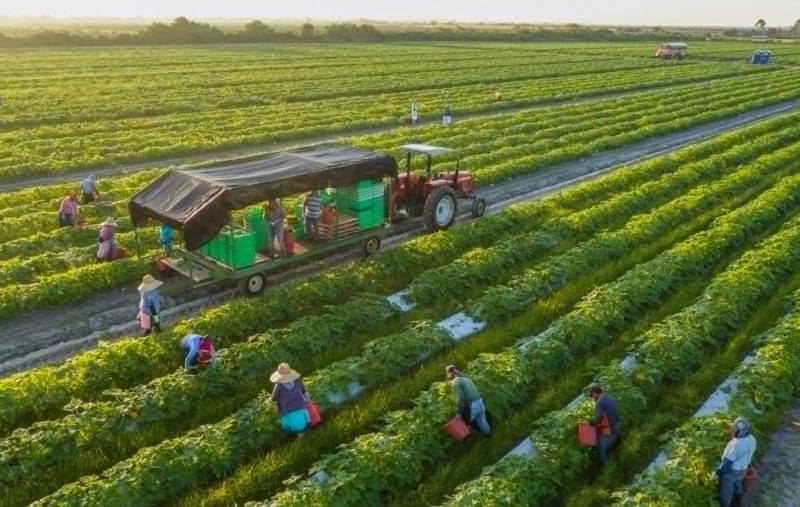
Technology has revolutionized numerous industries, and agriculture is no exception. In recent years, the role of technology in enhancing sustainable agriculture practices has become increasingly significant. From precision farming to automated systems, innovative solutions have helped farmers optimize productivity, reduce resource consumption, and promote environmentally friendly practices. This article explores the various ways in which technology is transforming the agricultural landscape and fostering sustainable practices.
1. Introduction
Sustainable agriculture practices aim to meet the growing global demand for food while minimizing the negative impact on the environment. Technology plays a vital role in achieving these goals by providing innovative tools and solutions that optimize agricultural processes, increase productivity, and reduce waste. By leveraging technology, farmers can adopt more efficient and environmentally friendly practices, ensuring the long-term viability of their operations.
2. Precision Agriculture: Improving Efficiency and Reducing Waste
Precision agriculture utilizes advanced technologies such as GPS, remote sensing, and geospatial data to enable farmers to make data-driven decisions. By analyzing real-time information about soil conditions, weather patterns, and crop health, farmers can tailor their approach to maximize yields while minimizing resource consumption. Precision agriculture techniques include variable rate application of fertilizers and pesticides, targeted irrigation, and automated monitoring systems.
3. IoT and Sensors: Enhancing Monitoring and Data Collection
The Internet of Things (IoT) and sensor technologies have transformed the way farmers monitor and collect data. IoT-enabled sensors can be placed throughout the farm to measure soil moisture, temperature, humidity, and other vital parameters. This real-time data allows farmers to optimize irrigation schedules, detect crop diseases or pests early, and improve overall farm management. The integration of IoT and sensors enhances efficiency, reduces manual labor, and minimizes the use of resources.
4. Drone Technology: Revolutionizing Crop Management
Drones equipped with high-resolution cameras and sensors offer a new perspective on crop management. Farmers can use drones to survey large areas of farmland quickly, capturing detailed imagery that helps identify crop stress, nutrient deficiencies, or irrigation issues. This information enables timely intervention and precise application of resources, resulting in better crop health and reduced wastage of fertilizers and water.
5. Robotics and Automation: Streamlining Agricultural Processes
Robotic systems and automation have revolutionized labor-intensive tasks in agriculture. Autonomous machinery can perform activities such as seeding, harvesting, and weed control with precision and efficiency. By replacing manual labor with robotics, farmers can reduce costs, increase productivity, and minimize the need for chemical inputs. Furthermore, robots can work continuously, eliminating human limitations and ensuring round-the-clock operations.
6. Genetic Engineering: Improving Crop Yield and Resistance
Genetic engineering techniques have facilitated the development of crops with enhanced yield potential and resistance to pests, diseases, and environmental stressors. Through genetic modification, scientists can introduce specific traits into crops, enabling them to thrive in challenging conditions. By cultivating genetically engineered crops, farmers can achieve higher yields, reduce chemical inputs, and minimize the environmental impact of agriculture.
7. Big Data and Analytics: Enhancing Decision-Making
The collection and analysis of vast amounts of agricultural data have become possible through big data and analytics tools. By integrating data from various sources, such as weather patterns, soil composition, and market trends, farmers can make informed decisions regarding planting schedules, resource allocation, and market strategies. The insights derived from data analysis empower farmers to optimize their operations and improve overall efficiency.
8. Sustainable Energy Solutions: Powering Agriculture Responsibly
The adoption of sustainable energy solutions, such as solar panels and wind turbines, has gained momentum in the agricultural sector. These renewable energy sources can power farm operations, reducing reliance on fossil fuels and minimizing greenhouse gas emissions. Additionally, farmers can generate surplus energy and contribute to the local power grid, further promoting sustainable energy practices.
9. Smart Irrigation Systems: Conserving Water Resources
Water scarcity is a significant concern in agriculture, particularly in arid regions. Smart irrigation systems utilize sensors, weather data, and predictive algorithms to optimize water usage. By delivering the right amount of water at the right time, these systems conserve water resources and prevent over-irrigation, which can lead to soil degradation and water pollution. Smart irrigation also helps farmers reduce costs associated with water usage.
10. Mobile Applications: Access to Information and Marketplaces
Mobile applications have provided farmers with easy access to information, marketplaces, and agricultural resources. Farmers can use mobile apps to access weather forecasts, crop prices, pest management techniques, and farming best practices. These apps facilitate knowledge sharing, connect farmers to buyers and suppliers, and empower them to make informed decisions on the go.
11. Challenges and Considerations in Adopting Agricultural Technologies
While technology offers immense potential for enhancing sustainable agriculture, certain challenges and considerations need to be addressed. These include the initial cost of implementing technology, the need for technical training and support, data privacy and security concerns, and equitable access to technology for small-scale farmers. Overcoming these challenges requires collaboration between technology providers, policymakers, and farmers.
12. Policy Implications: Encouraging Technological Innovation in Agriculture
To promote the adoption of agricultural technologies, supportive policies and incentives are crucial. Governments can play a significant role in facilitating technological innovation by providing funding opportunities, offering tax incentives, and creating regulatory frameworks that encourage sustainable practices. Collaboration between public and private sectors is essential for creating an enabling environment for technological advancements in agriculture.
13. Conclusion
Technology has emerged as a powerful force in transforming sustainable agriculture practices. From precision agriculture and IoT-enabled sensors to drone technology and genetic engineering, innovative solutions are revolutionizing the way farmers produce food. By leveraging technology, farmers can optimize productivity, reduce resource consumption, and promote environmentally friendly practices. As we move forward, it is essential to address challenges, ensure equitable access to technology, and create supportive policies that foster technological innovation in agriculture.
The Future of Workforce Automation: Opportunities and Challenges